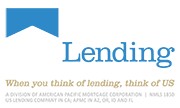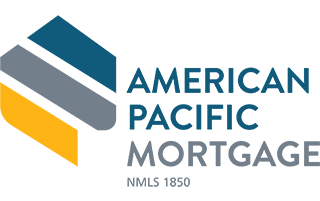Home Equity Loan vs. Refinance your Home? Assessing the Options
 If you’re currently paying down a mortgage, then you have access to a number of loan options that other borrowers do not have. For example, you not only have the ability to refinance your home if you have equity in your home, but you can also take out a home equity loan. Here we compare home equity loans vs refinance loans to give you an idea of which loan will best suit your specific needs.
If you’re currently paying down a mortgage, then you have access to a number of loan options that other borrowers do not have. For example, you not only have the ability to refinance your home if you have equity in your home, but you can also take out a home equity loan. Here we compare home equity loans vs refinance loans to give you an idea of which loan will best suit your specific needs.
Defining the Purpose For the Finance Option
The reason why you need a loan will help determine whether a home equity loan or a home refinance is your best option. There are many reasons why you might want to take out a loan. Homeowners commonly take out loans to invest in home improvements, to pay down personal debts, to pay for school tuition, to invest in business ventures, or even to pay for personal wants, such as for a vacation. In some cases, a homeowner might want to replace their existing loan with a new loan that has better terms as a way to save money over the long run. Knowing exactly what you need the money for will make it easier to figure out which type of loan will best suit your needs.
Option 1: Home Equity Loan
If you want to take out a home equity loan, you will need to have equity in your home. The way that you determine whether you have equity in your home is by identifying the value of your home (done through a home appraisal) and how much you still owe on the mortgage. If the difference between these two numbers is positive, then that’s the equity that you have. If you owe more than what your property is worth (which can happen if your house has depreciated in value over the years), then you won’t have equity to borrow against.
Basic Definition
When you take out a home equity loan, you’re putting up the equity that you’ve built in your home over the years as collateral. Not only does this mean that if you default on your loan payments that you’ll lose your house, but it means that in order to qualify, you’ll need to have a decent amount of equity built up. If you only have five percent equity in your home, a lender will not deem this to be a sufficient amount to justify the risk of approving the loan. Generally speaking, you need to have at least 20 to 30 percent equity to qualify. If you have enough equity to qualify for a home equity loan, lenders will typically let you borrow upwards of 80 to 85 percent of the home’s value minus what you still owe on the mortgage.
Types of Loans for Home Equity
Borrowing against your home’s equity presents two main options. You can take out a fixed-rate home equity loan or a HELOC (Home Equity Line of Credit) loan. Here is a brief rundown of the differences between the two types of home equity loans:
Fixed Rate
A fixed-rate home equity loan is relatively straight forward. You will receive your loan as one lump sum payment that you can then use however you want. You will be required to repay a fixed-rate loan over a specific period of time at a fixed interest rate. This means that the monthly payment (including the interest rate) will never change over the entire lifespan of the loan.
Lines of Credit
A HELOC loan is a lot different than a traditional fixed-rate loan. The way it works is that the lender provides the borrower with a line of credit based on the equity in their home. This means if a borrower is approved for a $10,000 HELOC loan, they will receive it as a line of credit that they can withdraw from over time. It’s not until you withdraw from that line of credit that you will owe payments and interest on the loan–and only on what you’ve withdrawn. Additionally, if you take out money from your line of credit and then repay a part or all of what you’ve taken out, the amount you’ve paid back will be applied back to your line of credit. For example, if you’ve taken out $5,000 from your $10,000 line of credit and then pay back $2,000 plus any interest accrued, then you will have a $7,000 line of credit left to withdraw from.
Terms under Home Equity Loan
The terms of your home equity loan will vary slightly based on whether you’ve taken out a fixed-interest loan or a HELOC loan. Although you don’t have to begin making payments on the loan or its interest when you’ve been approved for a HELOC loan until you begin withdrawing money from your line of credit, you will have to maintain a balance and pay an annual fee. Additionally, there’s usually a minimum withdrawal amount.
Ease in Application (Time-frame involved)
It shouldn’t take more than 30 to 45 days for your application to process. The lender will need to do a number of things to ensure that you’re eligible. They will run a credit check and confirm your debt-to-income ratio, which shouldn’t exceed 45 percent. What can take a little longer is the home appraisal. Lenders need to make sure that you don’t owe more than your home’s current value; however, if you’re taking out a home equity loan not long after you took out your initial home loan (and you have enough equity in your home already), then an appraisal may not be necessary.
Interest Rates Involved
Fixed-rate loans typically come in five to 15-year terms and, of course, include a fixed interest rate that must be paid every month right after you take out the loan. You’ll also have to pay closing costs, which are usually around the same as a typical mortgage, although they do vary somewhat from lender to lender. The interest rates on a HELOC loan are adjustable-rate, which means that they will fluctuate over the course of the loan based on market rates. The monthly payments you owe will vary widely based on how much you owe and what the interest rate is.
Probability Rate of Approval: The Statistics Say
The odds of being approved for a home equity loan has nothing to do with what you want to use the money for and everything to do with your eligibility. The more equity you have, the better your credit history is, and the higher your credit score is, the more likely you are to be approved. For example, it’s possible to qualify with a 620 FICO score and 15 percent equity in your home, but your odds are much better if have a higher credit score or more equity–or both, and a history of paying your bills on time and in full and a low debt-to-income ratio are of course a plus.
Option 2: Refinancing
Home equity loans can be very beneficial, but they’re not the only option for homeowners looking to borrow money. Another option is to refinance your existing mortgage, which is a different process altogether.
Basic Definition
When you refinance your home, you’re basically taking out a second mortgage. Using that second mortgage, you pay off whatever balance is left on your first mortgage. Effectively, you’re replacing one mortgage with another. One of the main reasons to do this is if you didn’t have favorable terms on your first mortgage and you think you can qualify for better terms (such as a lower interest rate) on a second mortgage. By replacing your old terms with new, better terms, you can save a significant amount of money on interest.
Types of Refinancing
Although refinancing your home might seem relatively straight forward at first glance, there are actually a few types of refinancing options to consider. The following are the different refinance loans available:
Rate-and-Term Refinance
The rate-and-term refinance loan is the most popular type. This second mortgage has different mortgage rates or loan terms (or both) that replaces your existing mortgage.
Fixed-Rate Refinance
A fixed-rate refinance is a secondary loan in which the monthly payments will be fixed at the time of the loan. You will know exactly what you are paying on a monthly basis since the principal and interest payments will never change over the loan’s lifetime.
Adjustable-Rate Refinance
Adjustable-rate refinance loans have a fixed interest rate for the first five to seven years of the loan’s duration. Once that period is up, the interest rates will fluctuate based on market conditions (although there’s usually an interest rate cap to prevent interest rates from going too high). Adjustable-rate loans provide some flexibility for homeowners who may want to refinance again in the future.
Home Affordable Refinance Program
The Home Affordable Refinance Program (HARP) was established by the U.S. Department of Housing and Urban Development (HUD) to help low-income homeowners refinance their homes for up to 125 percent of their value.
Terms Under Refinancing
There are three major criteria that lenders will look at when refinancing your home: your debt-to-income ratio (43 percent is the most you can have, but anything less is ideal), the equity you have in your home (varies from lender to lender, although some require at least 20 percent), and your credit, which usually needs to be 620 or higher, although it’s ideal if it’s above 740. However, to qualify for HARP, no minimum credit score is required.
Ease in Application (Time-frame involved)
If you already have an existing mortgage with the same lender, refinancing shouldn’t take too long. The average refinance typically takes between 20 and 45 days, although there are factors that can speed up and slow down the process.
Interest Rates Involved
Interest rates will vary based on a variety of factors, including the duration of the loan (the shorter the loan length is, the lower interest rates will be), the current market conditions, and your credit history. If your credit score has greatly improved since you took out your initial mortgage and the market rates are particularly low compared to what they were when you took out your initial mortgage, then refinancing can result in a much lower interest rate.
Probability Rate Of Approval: The Statistics Say
Your chances of being approved for a refinance depend on a variety of factors, including your credit score, mortgage payment history, debt-to-income ratio, and home equity. However, because the number of borrowers has decreased in recent years, some lenders are relaxing their criteria somewhat, making it easier to be approved than it may have been in previous years. Just remember that the better shape your financial situation is in, the better the terms will be that you qualify for. Being approved for a refinance loan that doesn’t have better terms than your existing mortgage won’t do you a whole lot of good.
Primary Difference Between Each Option
The main difference between a home equity loan and a refinance loan is that the home equity loan is an additional loan that’s added to what you owe on your mortgage. So essentially, you’ll be paying for two different loans. A refinance loan replaces your existing mortgage, which means you’ll still only be paying for a single home loan. Home equity loans are also more suitable for homeowners who need extra cash (although cash back refinance loans are an option in this case as well); standard refinance options are meant more to help you save money by replacing your existing mortgage terms with more favorable terms.
Scenarios In Which Home Equity May Make More Sense
A home equity loan makes more sense if you need cash to pay for something, like home improvements, a car, a student loan debt, or anything else, and applying for a cash-back refinance loan doesn’t make sense because the terms won’t be more favorable than those you already have on your existing mortgage.
Scenarios In Which Refinance May Make More Sense
If the terms on your existing mortgage are not favorable, then refinancing your mortgage makes sense, especially if you qualify for better interest rates now that your credit score is better. If you don’t need extra cash and you’re just looking to save money over the long term, refinancing is the best option. If you could use the extra cash and you still qualify for better terms, a cash-back refinance may provide the best of both worlds.
Assess Your Specific Circumstance
While there are different scenarios in which either a home equity loan or a refinance loan make the most sense, it’s important to consider your unique situation. Weigh the odds of being approved. You’re more likely to be approved for refinancing since the refinance loan you take out will be of primary importance. With a home equity loan, the initial mortgage is the priority, which means if you’re low on funds one month, you’ll make your mortgage payment before you make your home equity loan payment–something lenders take into account. Secondly, if you can barely qualify for a refinance due to your credit score, then odds are the terms you’ll qualify for won’t be much better than those of your current mortgage, so refinancing won’t make much sense.
Two other factors you’ll want to consider are how much more you can afford to pay every month and how much time you have. If you’re struggling to make payments on your mortgage as it is, taking out a home equity loan may not be the best idea unless you’re using it to pay down another high-interest debt. How much time you plan on living in your current home needs to be considered as well. A home equity loan can be effective if you’re making home improvements to improve your property value so that you can sell in the near future. If you plan on moving soon, refinancing may not make much sense since the closing costs may cost more than what you would save by refinancing.
The views, articles, postings, and other information listed on this website are personal and do not necessarily represent the opinion or the position of American Pacific Mortgage Corporation or US Lending Company.
* For loan examples and more information visit our disclosure page at https://www.uslendingcompany.com/disclosures/





